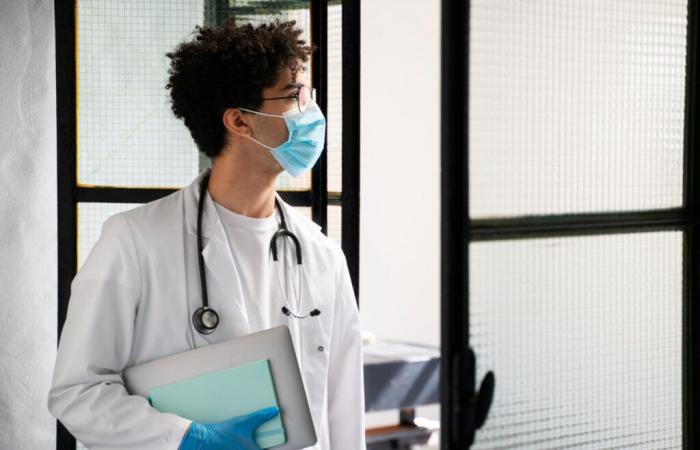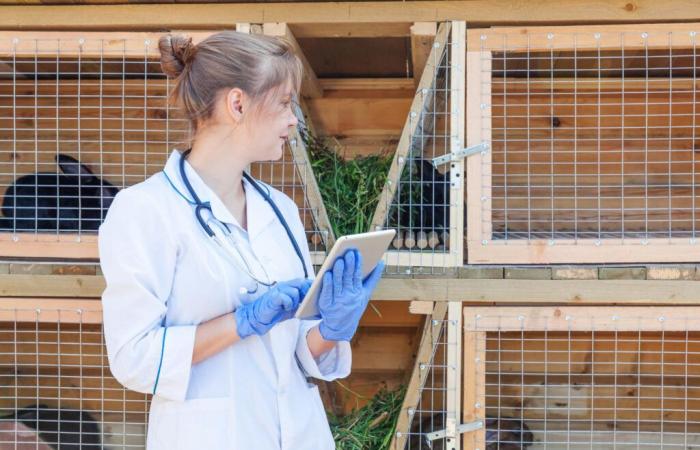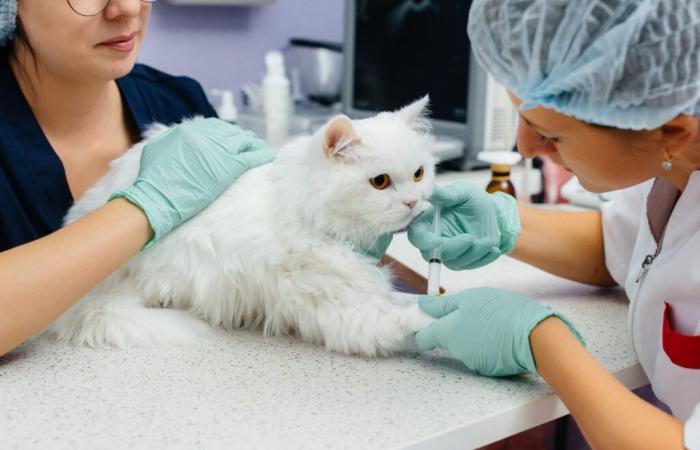World Veterinary Medicine Day is celebrated every last Saturday of April and, each year, it is worth celebrating not only the professionals dedicated to animal care, but we must also highlight the importance of Zoonosis Surveillance Units (UVZs ) within the scope of public health.
These units, linked to the Unified Health System (SUS), play a crucial role in the surveillance, prevention and control of zoonoses, as established by Ordinance No. 758 of the Ministry of Health. Previously known as Zoonoses Control Centers (CCZ), the The change in nomenclature reflects a proactive approach, where control is activated only when prevention proves to be insufficient. UVZs are responsible for protecting public health, preventing and controlling zoonoses and accidents caused by venomous and poisonous animals, in other words, it aims at health not only for companion animals, but also for us humans.
The veterinarian, technical advisor and director of the São Paulo Zoonoses Surveillance Division, Gisele Melo Alves Moretti, comments that the interaction between humans and animals is multifaceted, being affected by environmental, social and cultural issues, and zoonoses are a group of diseases that involves both. “Communicating effectively with the public can be a challenge, as it is often necessary to simplify complex biology concepts to ensure understanding by the general population. Furthermore, there is time pressure, as most zoonoses and vector-borne diseases are acute, with short cycles of infection and manifestation of symptoms. Therefore, a quick response is essential to contain the spread of these diseases,” she declares.
Another significant challenge, according to her, is the effective control of these diseases. This involves several measures, from direct actions such as vaccination and treatment of domestic animals, to raising awareness about responsible ownership and combating the spread of false information about vaccines. “In densely populated urban areas, coordination between different sectors is crucial. The rapid identification and notification of suspected cases of zoonoses allows for an agile response by health authorities, minimizing damage to the population. These challenges require not only technical expertise, but also a collaborative and integrated approach to effectively address the complexities of zoonotic diseases,” she explains.
Main zoonotic diseases
The veterinarian comments that the measures adopted for different zoonoses depend on each case, as each one has its own plan or program to prevent the spread.
- For arboviruses, they include: house-to-house visits to eliminate breeding sites and provide guidance to the population, mosquito control with the application of insecticides in areas where diseases such as dengue, chikungunya and zika are transmitted, surveillance and control of vectors in special properties, entomological monitoring of mosquitoes and epidemiological analysis of suspected patients, in addition to public health education and environmental control actions.
- For diseases such as rabies, measures such as annual vaccination of domestic animals, epidemiological surveillance in bats and domestic animals, and public health education are carried out.
- As for leptospirosis, epidemiological surveillance, rodent control and public health education measures are adopted.
- Sporotrichosis is tackled with investigation, diagnosis in animals, guidance and monitoring of treatment, in addition to castration to reduce the movement of animals outside the home.
- Other diseases, such as spotted fever, leishmaniasis and Chagas disease, are also targets of surveillance and vector control, entomological research and public health education measures.
- Finally, accidents caused by venomous animals are addressed with surveillance and control of arachnids and hymenoptera, together with public health education actions.
Epidemiological monitoring
Epidemiological surveillance of zoonotic diseases follows the guidelines of the national health surveillance system, which establishes a list of notifiable diseases. The biologist and director of the São Paulo Zoonoses Division, Eduardo de Masi, explains it to us. “Cases are notified to local health authorities, such as the Health Surveillance Units (UVIS) in São Paulo, triggering prevention and control measures in accordance with Ministry of Health regulations. The Zoonosis Surveillance Division (DVZ) in the capital processes biological samples, issues diagnostic reports, and coordinates actions such as case monitoring, outbreak investigations and vector surveillance, guiding interventions and resource allocation. These measures are fundamental to direct surveillance actions and ensure effective communication of risks to public health”, he explains.
For him, collaboration between veterinarians, doctors and public health authorities is essential to prevent and control zoonotic diseases. “Authorities must ensure the structure for rapid identification and notification of cases, while doctors and veterinarians must be alert to diseases in their areas and ready to report anomalies. Working together, these professionals facilitate early identification, accurate diagnosis and implementation of prevention strategies. This integrated approach, based on the concept of one health, recognizes the interconnection between human, animal and environmental health, emphasizing the importance of collaboration for the effective control of zoonoses”, he highlights.

Educational strategies
Veterinarian Gisele reports that health authorities have sought to include the topic of zoonotic diseases in school curricula and use social media to maximize the reach of educational campaigns. “Currently, several strategies are being used successfully. This includes awareness campaigns through traditional and digital media, aiming to inform the public about zoonotic diseases, their risks and preventive measures”, she lists.
In addition, lectures and educational activities are held in schools, with the inclusion of these themes in pedagogical programs. “Health professionals are also being trained to recognize, notify, diagnose and treat zoonotic diseases, in addition to guiding the public on preventive measures and essential care. Community events are promoted, in which health professionals provide information about zoonotic diseases and conduct outreach and instruction on control and prevention. The distribution of leaflets, posters and other educational materials in strategic locations, such as veterinary clinics, health posts and parks, is also part of these strategies, as well as during house-to-house visits carried out by health teams, to disseminate information about zoonotic diseases , especially those that are most common or prevalent in certain areas,” he says.
These actions are important, taking into account that animal welfare is crucial for public health, as healthy animals are less likely to transmit zoonotic diseases to humans. “Responsible ownership, based on the principles of one health, promotes healthy environments for animals, preventing the spread of zoonoses. The vaccination schedule for pets is essential to prevent diseases such as rabies, while the health control of veterinary establishments and compliance with legal standards for animal husbandry also play an essential role. The Health Surveillance Units (UVZs) and health surveillance are responsible for ensuring compliance with these measures through inspections, inspections and education of the population”, highlights Gisele.

Emergency situations
In cases of urgent situations and outbreaks of zoonotic diseases, biologist Eduardo reveals that there are contingency plans that outline actions for different stages of the event, from attention to emergency. “These plans are designed to provide clear and specific guidelines, ranging from mass vaccination to the application of insecticides, depending on the nature of the disease and the level of severity of the outbreak. Furthermore, for endemic diseases with less epidemic potential, such as leptospirosis and leishmaniasis, there are well-established control programs, with defined responsibilities for each component of the health surveillance system. These actions are coordinated by the Zoonoses Surveillance Division (DVZ), ensuring a coordinated and effective response to outbreaks of zoonotic diseases,” he indicates.
In the team’s day-to-day work, several innovative initiatives are implemented to face the challenges of zoonotic diseases, with a special focus on controlling the Aedes aegypti, vector of diseases such as dengue, zika and chikungunya. “Drones are used to apply insecticides, traps to capture adult mosquitoes and risk mapping, following the guidelines of the Ministry of Health. In addition, new technologies are being explored to control scorpions in rainwater galleries and to control rodents, using methods that are less harmful to the environment. There is also investment in risk mapping to prevent accidents caused by scorpions, leptospirosis and sporotrichosis, aiming for more effective prevention and control strategies”, he points out.
With this, we conclude that…
On this Veterinary Medicine Day, it is essential to highlight the vital role of Health Surveillance Units (UVIS) in protecting public health. “With more than 50 years of history in Brazil, these entities have been fundamental pillars in the prevention and control of zoonotic diseases. A notable example is the São Paulo Zoonosis Control Division, which since 1973 has led crucial initiatives in the fight against rabies and leptospirosis surveillance, contributing significantly to the establishment of technical regulations by the Ministry of Health”, reinforces Gisele.
The laboratories at these units play a crucial role in identifying animal species and diagnosing zoonoses, offering invaluable services for health and science. “The surveillance efforts for zoonotic diseases carried out by these centers are essential, highlighting them as public health units essential to the Unified Health System (SUS)”, reiterates Eduardo.
It is worth mentioning that the Covid-19 pandemic, which has devastated the world, is a stark reminder of the importance of monitoring zoonoses. The SARS-CoV-2 virus, responsible for the disease, originated from animals, highlighting the pressing need for constant monitoring by health authorities. You never know what the next harmful biological agent will be to make the jump from animals to humans and what the resulting impact will be. Therefore, surveillance of zoonoses remains a fundamental task to protect public health and prevent future outbreaks and pandemics.









